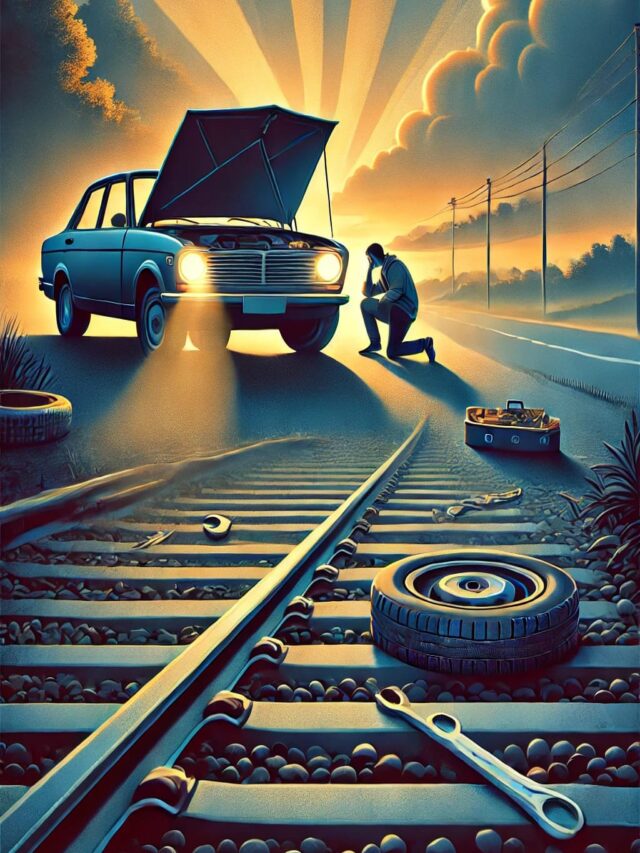Do you ever experience starting trouble while starting your vehicle? According to recent data, 52% of vehicle breakdowns occur due to battery-related issues. Apart from this, fuel and unison problems also cause a significant percentage of other failures. If you want to avoid this problem, this step-by-step troubleshooting guide will help you diagnose and resolve starting issues efficiently. Read on to learn the step-by-step troubleshooting process that enables you to identify and fix vehicle starting problems.
Here are the few steps to overcome Starting trouble in your bike/car:
Step 1
Before you start a technical check, it is essential to know the exact reason of starting trouble in car or bike , whether it is a cold start issue or a complete failure to start. You can do this by pressing the self-start button.
Step 2
Sometimes, trouble occurs due to fuel-related issues. Fuel system failure causes 30% of starting failure. According to the National Highway Traffic Safety Administration, fuel system failure accounts for 430% of vehicle starting problems. So, if your vehicle is not getting enough fuel, it will fail to start. You can also follow the checks that will help you out.
- Check the fuel quantity in the tank. According to a survey, 12% of roadside assistance calls are due to empty fuel tanks.
- Inspect fuel flow from fuel Coke to the carburettor.
- Also, check the adulteration of water or foul smell by draining the carburettor and examining the fuel.
- Also, check screw turns and jets for blockage within the carburettor.
- Inspect for flooding and verify the position of the Jet needle.
Step 3
15% of starting trouble occurs due to air-related issues. For the proper combustion of fuel, adequate air intake is crucial. If the engine is not getting sufficient air, proper combustion can’t occur, and the engine does not start. You can check the following things to examine this:
- Check the air filter for blockages, oily deposits, or tears. Clean or replace the filter if needed. According to the US Department of Energy, clogged air filters can reduce fuel efficiency by up to 10%.
- Inspect the induction leaks by checking the tightening mounting bolts.
- Replace the gas kit and O-rings if needed.
Step 4
40% of the vehicle starting trouble are due to ignition-related issues, including faulty spark plugs and weak batteries. Star Plus and electrical components play a vital role in ignition, producing Sparks for fuel combustion. The proper Spark is not generated than considered troubleshooting with this:
- First, check the spark plug for gas or oil fouling and adjust or replace it if necessary. A faulty spark plug causes 25% of ignition failures.
- Check the loose couples and correct them if needed.
- You must check the battery voltage and charge or replace it if required.
- Inspect the fuse and replace it if it is faulty.
- Measure the plug cap resistance and replace it if it is not under the specification.
- Check ignition coil resistance and replace it if it does not meet specifications.
- Test battery voltage near CDI/TCI. If the voltage is absent, its inspector completes the wiring from the ignition key to CDI/TCI.
- Check the wire continuity from the battery to the ignition key.
- Use a multimeter to verify ignition key continuity. If there is no continuity in the on position, replace the key set.
- Inspect quality systems and replace them if they are out of specification.
Step 5
Sometimes, engine-related issues also cause starting trouble. As per the Auto Care Association, 10% of the starting shortcomings are due to internal engine issues. You can check it by:
- Inspect compression pressure. Inspect the bore, piston, rings, and valves if they are faulty.
- Check valve clearance and adjust if necessary.
- Inspect the clutch plate and adjust if required.
- Examine the magnet kit and replace it if needed.
Conclusion:
After following the systematic approach of this blog, you can identify the root cause of the starting trouble you are facing while starting your vehicle. Whether it is caused by a spark plug or an engine-related issue, through inspection and timely repair, you will ensure your vehicle’s smooth performance. If the problem still occurs after following all the states, you must consult a professional mechanical assistant. Understanding the most common causes, such as battery failure, fuel system issues, and ignition problems, will help you maintain your vehicle better and avoid breakdowns or starting trouble in bike or car. 70% of troubles do not occur even if you do regular servicing. Consult Mech N Tech to know more.

